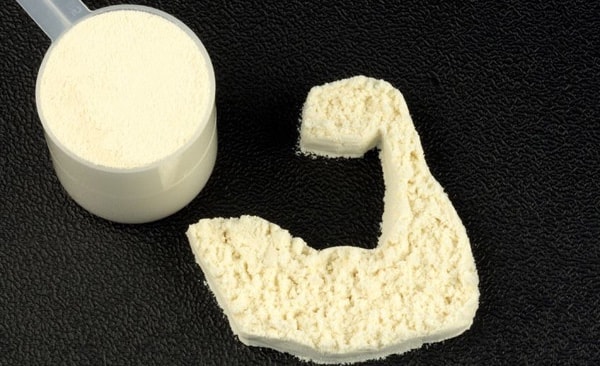Proteins provide the body critical protein and casein is a slow-digesting protein.

Whey stimulates protein synthesis
Fast-digesting whey means it is emptied from the stomach quickly, resulting in a rapid and large increase in plasma amino acids. This translates into a quick but transient increase in protein synthesis, while protein breakdown is not affected. Whey also has higher levels of leucine, a potent amino acid that stimulates protein synthesis. whey protein is superior at augmenting protein synthesis rapidly, but this positive effect is short-lived. Consuming repeated doses of whey allows for sustained high levels of blood amino acids and repeated bursts of protein synthesis that provide superior effects on muscle protein balance.
Casein offers a positive protein balance
Casein is the most abundant protein in milk. It is relatively insoluble and tends to form structures called micelles that increase solubility in water. During the processing of milk, which usually involves heat or acid, the casein peptides and micelle structure become disturbed or denatured to form simpler structures. As a result, a gelatinous material is formed. This is the basis for why casein has a slower rate of digestion, and results in a slow but steady release of amino acids into circulation.
In one study, researchers gave healthy subjects 30 grams of either whey protein or casein protein and made several measures of the anabolic and catabolic effect for 7 hours after the meal. Whey protein resulted in a rapid increase in blood amino acids and protein synthesis, but it was short-lived. Casein, on the other hand, resulted in a prolonged increase in blood amino acids that resulted in a 34% reduction in protein breakdown. The net protein balance remained more positive after intake of casein protein over a 7-hour period. The superior long-lasting effect of casein was attributed to a delayed gastric emptying and slower absorption rate from the gastrointestinal tract to the blood.
Whey and casein are better together
Since whey rapidly increases protein synthesis and casein blocks protein breakdown, a combination of both would be ideal.
A recent study compared the effects of supplementing with either a combination whey and casein protein versus carbohydrate on several markers of muscle anabolism during strength training.3 Untrained men participated in a 10-week resistance training program and either supplemented with 40 grams of carbohydrate or 40 grams of protein containing a mixture of whey and casein. Half of the supplements were consumed one hour before and then immediately after exercise on workout days. The results were overwhelmingly positive for the combination protein group. Despite similar background diets and identical training programs, supplementation with protein resulted in greater increases in several measures of muscle anabolism, including greater increases in lean muscle mass, thigh muscle mass, muscle strength, anabolic hormones and muscle specific proteins.
In a similar study that lasted 14 weeks, untrained men performed resistance training and received either 25 grams of carbohydrate or 25 grams of a combination whey and casein protein one hour before and immediately after exercise. The combination protein group had significantly greater increases in muscle fiber size compared to the carbohydrate group. These studies provide strong evidence that a combination protein consumed before and after workouts increases muscle size.
Practical uses of whey and casein
The science unequivocally shows that the digesting rate of protein is an important regulator of protein balance. Whey provides a quick burst of protein synthesis while casein makes an ideal protein supplement to sustain long periods of an anabolic environment for muscle growth. Based on these different characteristics, whey and casein can be used alone and in combination to exploit their unique biologic effects.
For example, whey protein can be very effective before and after a workout and first thing in the morning. But since the benefits of whey after exercise are short-lived, you should consume a meal containing protein 20-60 minutes after drinking a post-workout whey protein shake. In one study, 30 grams of whey protein were provided in a sequence of 13 small meals given each 20 minutes. This was found to be far superior for muscle anabolism compared to a single meal of whey or casein.
Alternatively, a combination of whey and casein (20 grams) could be consumed one hour before and immediately after exercise for a sustained benefit on protein balance. Casein is a perfect protein for a shake before bed because it promotes a sustained anti-catabolic environment while you sleep.
Summary
Because whey and casein have different but complementary effects, many people keep both types on hand and use them differently throughout the day—whey in the morning and after workouts and casein before bed. Or you can mix whey protein into a large glass of milk (about 80% casein) to combine the benefits of both. Research shows these proteins support greater increases in lean body mass and decreases in body fat as part of a resistance training program.
Source: www.nutritionexpress.com
Author: Jeff S. Volek, Ph.D., R.D.